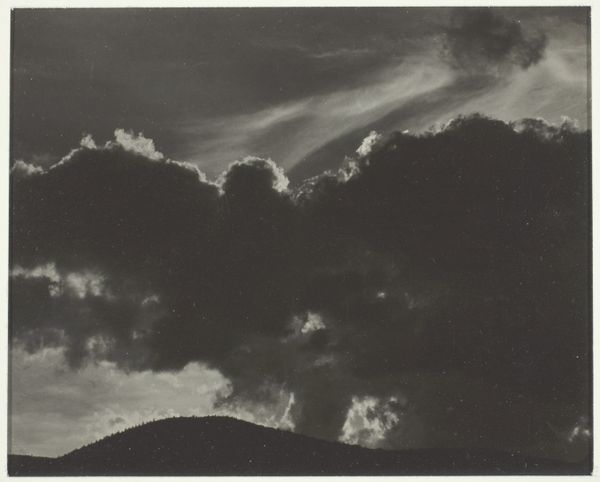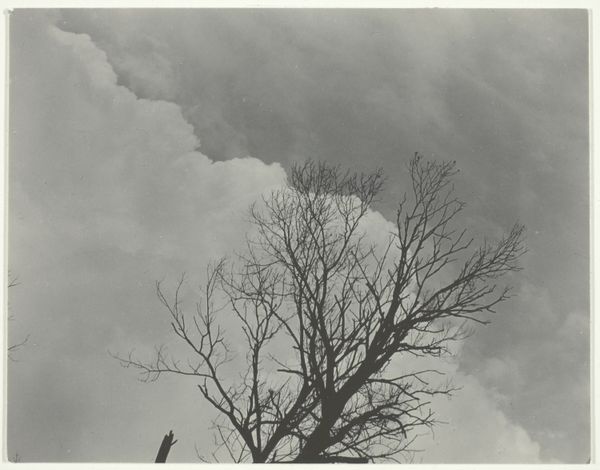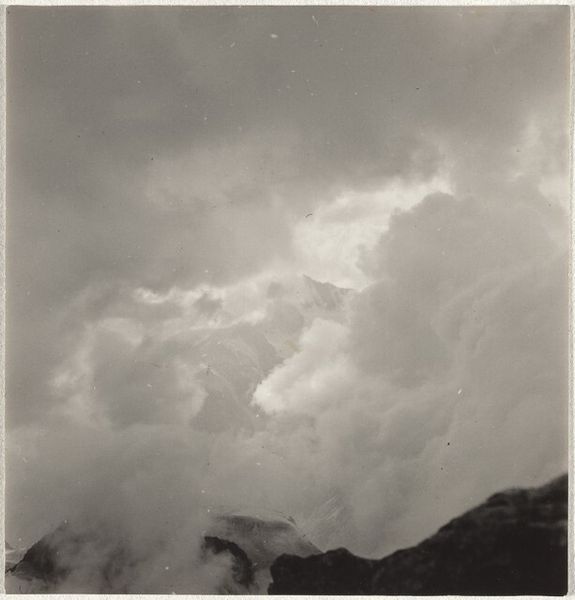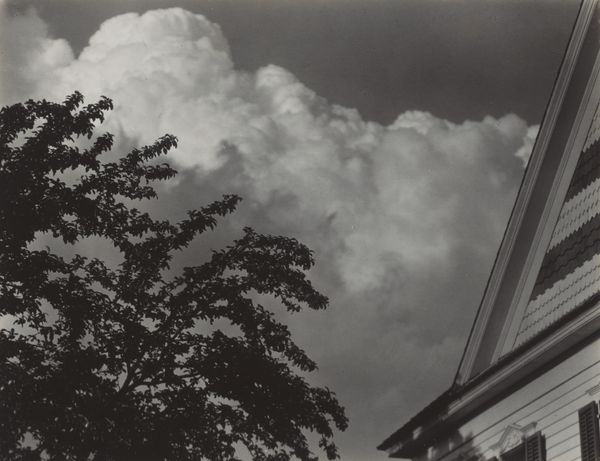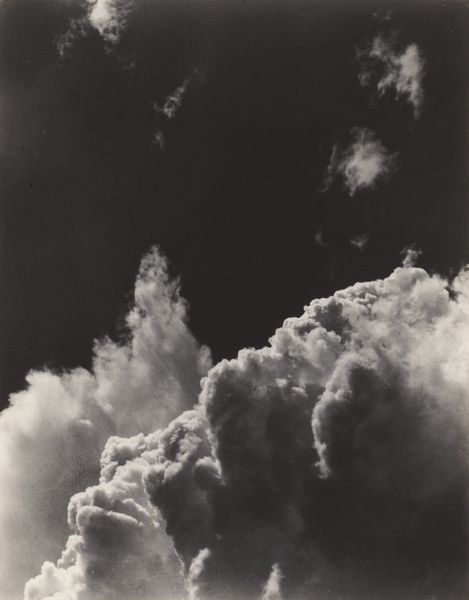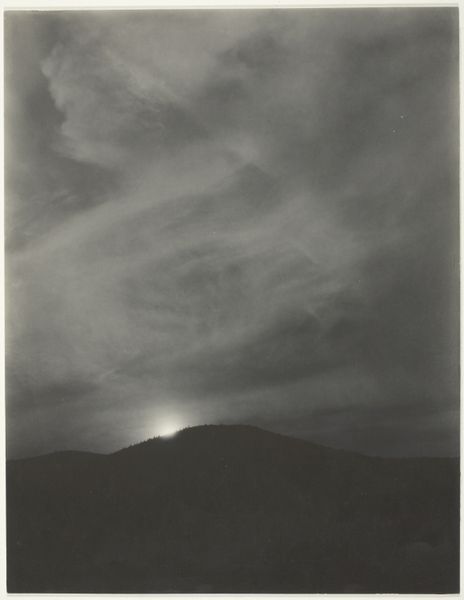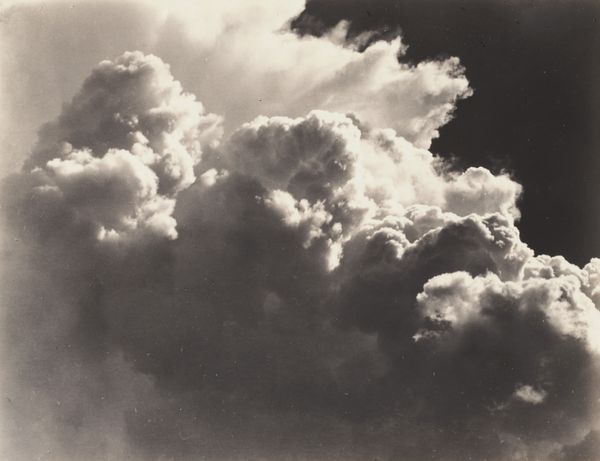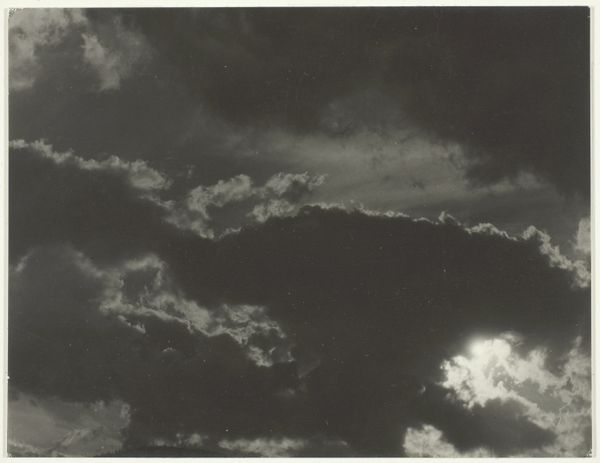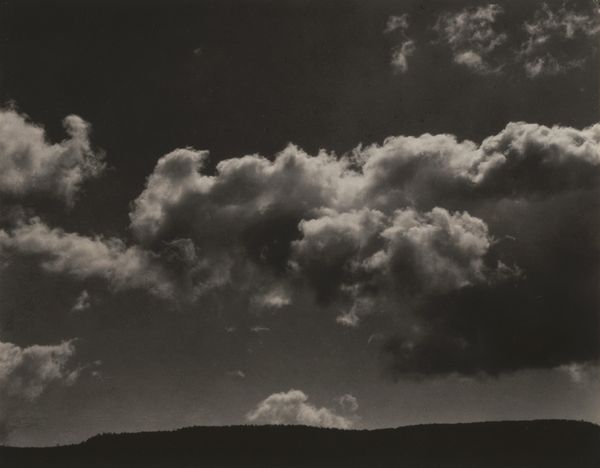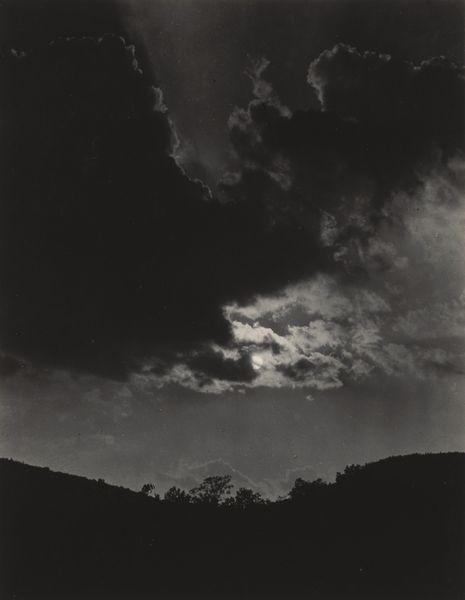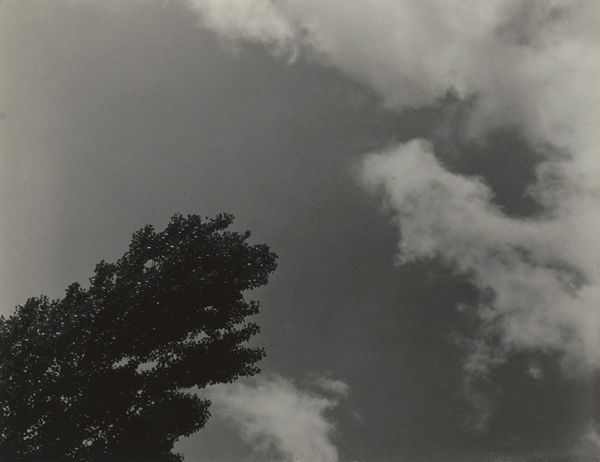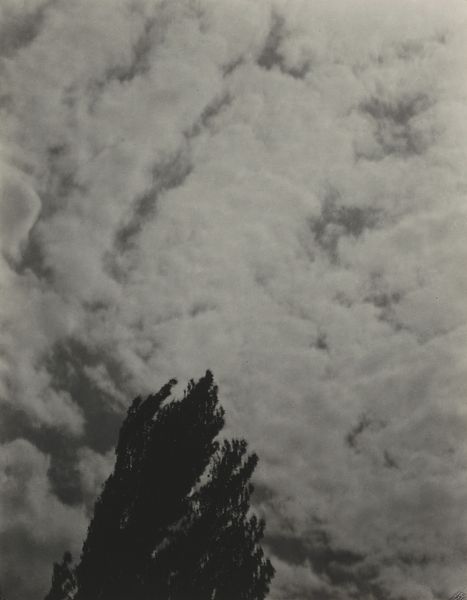
print, photography, gelatin-silver-print
#
organic
#
black and white photography
# print
#
organic shape
#
landscape
#
photography
#
gelatin-silver-print
#
monochrome photography
#
monochrome
#
monochrome
Dimensions: image: 5.9 x 5.5 cm (2 5/16 x 2 3/16 in.) sheet: 9.6 x 6.4 cm (3 3/4 x 2 1/2 in.)
Copyright: National Gallery of Art: CC0 1.0
Editor: This gelatin silver print, "Trees against sky--Landscape" by Robert Frank, was created sometime between 1941 and 1945. I’m really struck by the stark contrast between the dark land and the luminous sky. What do you see in this piece? Curator: Beyond the obvious formal qualities, I see a negotiation with power. Consider the historical context: made during WWII, a time when individual agency felt incredibly constrained. Frank, as a Jewish man in Europe during this period, would have been deeply aware of the precarity of existence. Editor: So you're saying the landscape isn't just a landscape? Curator: Exactly. The looming cloud, the barren trees… could these elements be interpreted as metaphors for oppression and resilience? How might the "organic shapes" of the landscape offer an interesting intersection with social constraints? Is there an element of quiet defiance embedded here, an assertion of nature’s enduring power against the backdrop of human conflict? Editor: That makes me think about the "organic" theme the tags point out; I hadn’t really considered that beyond a literal interpretation. Curator: Think about it more as an enduring resistance. How might Frank be subverting dominant narratives of power through a focus on the natural world? This photo invites us to think critically about the relationship between landscape, identity, and historical trauma. The simplicity also complicates a black and white understanding of how we look at photography. Editor: That's fascinating. I'm going to have to rethink how I approach landscape photography from now on. I always considered landscape to be just...a landscape, not some statement about society and history! Curator: Exactly! And there in lies the power to view photography critically through a variety of theoretical lenses. There is something for everyone here, with continued looking. Editor: Thanks, I'll remember to consider not just what I'm seeing, but why it was created and how it connects to the world around it.
Comments
No comments
Be the first to comment and join the conversation on the ultimate creative platform.
